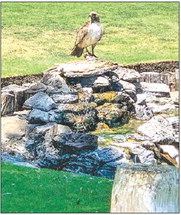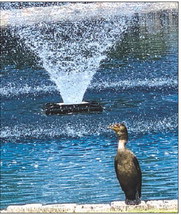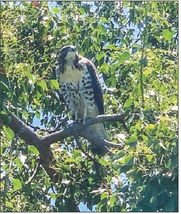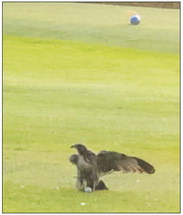Diversity of wildlife at Turtle Lake Golf Course is inspiring, uplifting


MEMBER COLUMN
by Robert Barnum
LW contributor
A truly beautiful and magnificent display of diversity in bird species happens for us every late spring at the Turtle Lake community golf course. We have the tiny hummingbird, flapping its wings 1,500 hundred times a minute. At times, it will hover in flight a mere 4feet from your face and stare in awe at you, its fluorescent green belly shining in the sun.
We have the small yet brave Phoebe that perches on the bridge, glaring at passersby, only taking flight when people are 5 feet away.
The brilliant colors of the Western Bluebird and the Yellow Breasted Flycatcher are like that of a Picasso painting.
The aquatic fishing ability of the cormorant is a fascinating sight to see. Trolling the pond underwater, diving seemingly forever. I have actually witnessed this bird have success.
Sadly only once have I viewed an astounding family of woodpeckers. Just recently, an annoyingly loud—especially for a golfer—flock of Brazilian parrots passed by.
They all commingle with the many species that we all see on a daily basis—the loud mimicking mockingbird, the common sparrow (even the hooded variety), swallows, crows, finches, blackbirds, robins and, of course, doves. A pair of doves have occasionally built a nest and produced offspring above tee box No 4.
And for you romantics, a pure white dove has been seen.
Like clockwork every year, large Canadian geese visit. Often, you will find Mallard ducks in and around the pond.
I have witnessed an egret in the pond and another unidentified beautiful webbed-foot species.
Then, flying above all of these is the majestic red-tail hawk. A pair of these birds of prey have nested and reproduced every year I have been a member of the LW community. Watching their young mature from nest to flight is fascinating.
This occurs for about eight weeks and is a delight to see around eucalyptus trees above the No. 4 putting green and other areas of the course.
What a sight it is to see these young birds, who have a 4-foot wingspan, learn to fly. I have recently seen as many as five hawks at one time above our course.
But the young ones provide an absolute treasure trove of viewing pleasure. The process of learning to fly includes many short jaunts that have them flying barely above golfers’ heads.
Watching them learning to hunt is fascinating. One of their favorite meals is squirrels. Watching a hawk chase them among the branches to no avail is pure comedy.
Watching them try to carry off golf balls, also to no avail, is also quite comedic, especially when my ball is being moved 20 feet in the wrong direction.
Fantastic bird viewing opportunities are there every day right on our own golf course.
A majestic bird in flight has the ability to uplift people’s spirits. To view a hawk floating, gliding, drifting on a breeze is mesmerizing. To see one go stealth, with ducked wings, at up to 120 mph, is breathtaking. I have seen a monkey-faced barn owl and a Peregrine falcon near my place. But the best spot for viewing is out there on the community golf course, especially the benches behind the No. 3 tee box.

A cormorant fishes at Turtle Lake.Laura Garcia

A hawk perched in a golf course tree.Laura Garcia

A hawk tries to carry off a golf ball.Paul Kim



